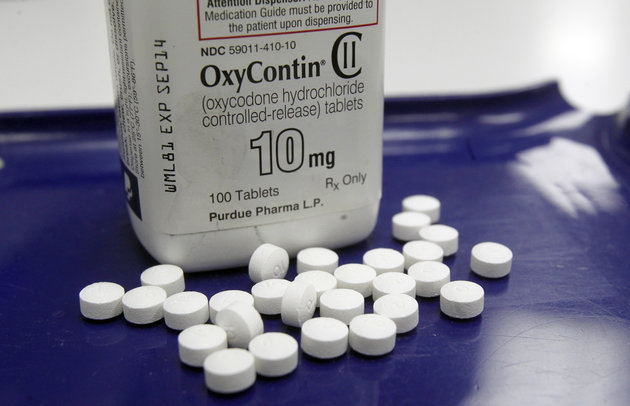-
Tips for becoming a good boxer - November 6, 2020
-
7 expert tips for making your hens night a memorable one - November 6, 2020
-
5 reasons to host your Christmas party on a cruise boat - November 6, 2020
-
What to do when you’re charged with a crime - November 6, 2020
-
Should you get one or multiple dogs? Here’s all you need to know - November 3, 2020
-
A Guide: How to Build Your Very Own Magic Mirror - February 14, 2019
-
Our Top Inspirational Baseball Stars - November 24, 2018
-
Five Tech Tools That Will Help You Turn Your Blog into a Business - November 24, 2018
-
How to Indulge on Vacation without Expanding Your Waist - November 9, 2018
-
5 Strategies for Businesses to Appeal to Today’s Increasingly Mobile-Crazed Customers - November 9, 2018
CDC Issues New Guidelines for Opioids to Treat Chronic Pain
“The science of opioids for chronic pain is clear”, Tom Frieden, the director of the CDC, said in a teleconference yesterday.
Advertisement
“We know of no other drug prescribed so frequently that kills so many patients”, said CDC Director Thomas Frieden, at a briefing for reporters.
The CDC has urged doctors to use exercise, physical therapy as well as over the counter medications prior to using painkillers for patients’ chronic pain. The CDC says that 249 million prescriptions for opioid pain medication were written by health-care providers in 2013.
Dr. Robert Roose, chief medical officer and vice president of addiction and recovery services for the Sisters of Providence Health System in Holyoke, said while the CDC guidelines are voluntary, any time the CDC issues guidelines, they are likely to become the standard of care for treating patients.
Some studies suggest only 5% of patients prescribed opioids receive them for chronic pain, but they account for 70% of overall opioid prescriptions and the majority of overdoses.
He said the goal is to reduce overdose deaths. Doctors will now be directed to treat patients with chronic pain by starting with Non-Steroid Anti-Inflammatory Drugs (NSAIDs).
The U.S.is experiencing an epidemic of prescription opioid overdoses.
Simply impressing upon doctors that opioid drugs “should not be the first-line treatment for chronic pain” could help put a significant dent in the number of people who end up addicted to such drugs, Frieden said. Much of the advice is geared for primary care physicians, who prescribe almost half of the opioid painkillers in the United States. If we want to make a true difference in this epidemic, our efforts to combat opioid addiction must go beyond these guidelines.
Nonopioid therapy is preferred for chronic pain outside of active cancer, palliative, and end-of-life care.
According to the National Institute on Drug Abuse, 75% of people living with addiction started with pills prescribed to them for pain. The CDC began working on the guidelines released Tuesday previous year.
CDC will continue to work with states, communities, and prescribers to prevent opioid misuse and overdose by tracking and monitoring the epidemic and helping states scale up effective prevention and treatment programs.
“While these are important measures we need prescribers to take, they are just guidelines and we need requirements to ensure all prescribers of opioid painkillers are educated in safe prescribing practices and the identification of possible substance use disorders”, Markey said. That being said, I can tell you as a practicing physician that many guidelines I use are often based on low-quality events, and that doesn’t mean bad evidence.
Advertisement
Researchers at the agency reviewed clinical trials, data on prescriptions, use, and abuse of the drugs, finding most trials with the drugs lasted six weeks or less, but that patients are often on them for much longer periods of time.





























